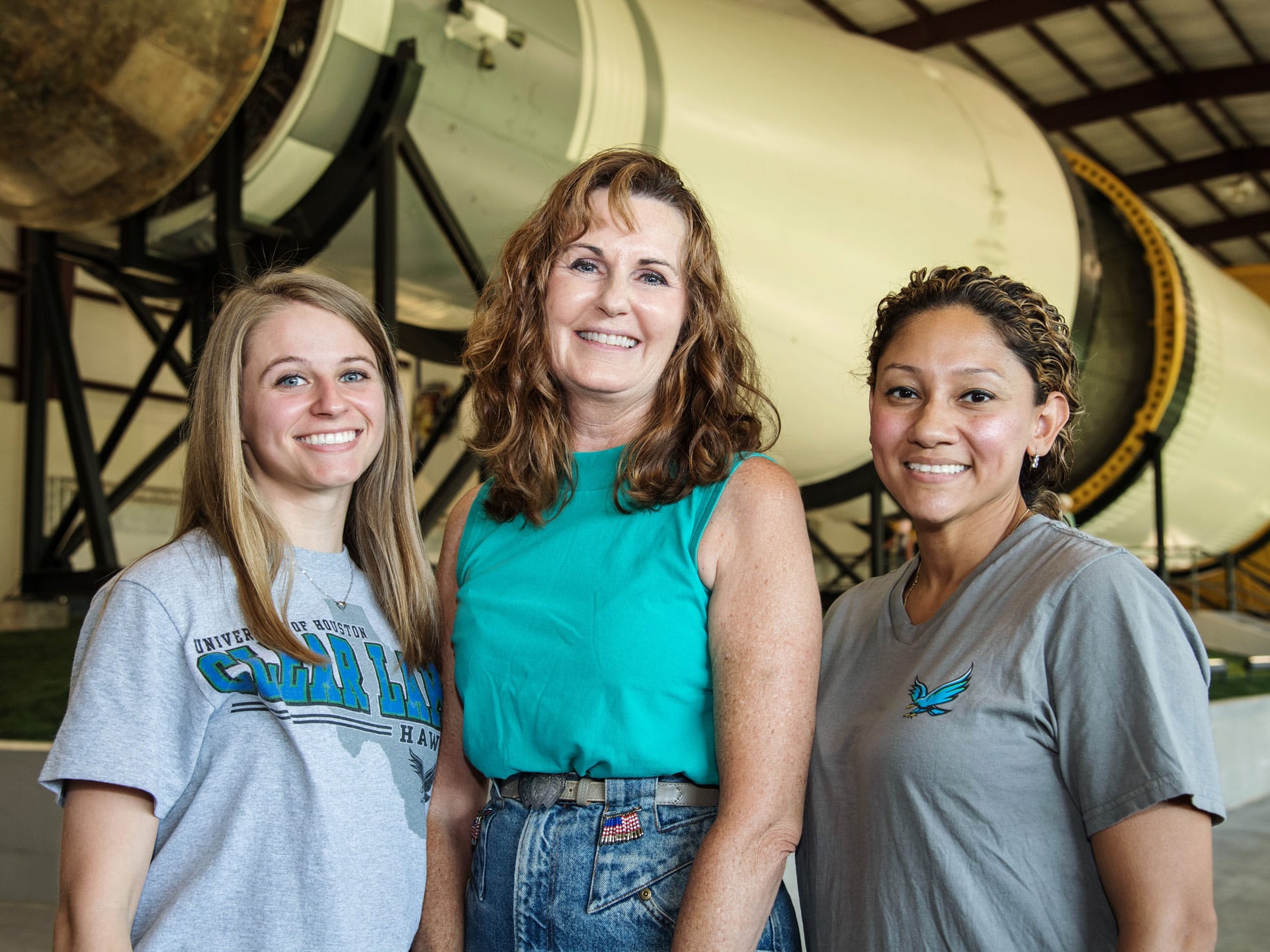- Future Students
- How to Apply
- Visit UHCL
- Admitted Students
- Tuition, Costs and Aid
- Degrees and Programs
- Contact Admissions
- Current Students
- Class Schedule
- Academic Calendar
- Advising
- Events
- Library
- Academic Resources and Support
- Student Services and Resources
- Alumni
- Lifetime Membership
- Alumni Events
- Update Your information
- Awards and Recognitions
- Give to UHCL
UHCL students, faculty attend STEM professional development at JSC
August 16, 2017 | Jean Rudnicki

Two University of Houston-Clear Lake College of Education pre-service students along with a UH-Clear Lake faculty adviser got behind-the-scene peaks at several NASA Johnson Space Center projects while attending a STEM (science, technology, engineering, and mathematics) professional development workshop onsite at the center this summer.
Students Lesley Rosales and Kristen Cobbs, both seeking Core Subjects EC-6 degrees and anticipating graduation in December, attended the NASA-sponsored program along with UH-Clear Lake Mathematics Methods Instructor Linda Sansing.
The NASA Minority University Research and Education Project, or MUREP, provides the opportunity for minority-serving institutions such as UH-Clear Lake to participate in a five-day MUREP Educator Institutes at its 10 NASA Centers. These institutes are comprised of student-centered classroom activities that utilize NASA assets and resources and help educators develop instructional practices that will enhance STEM instruction for all students.
“I really didn’t know what to expect,” said Rosales. “I can’t tell you how amazing it was from the first day. We didn’t even want to leave the last day. It was so amazing to see such backstage things that I thought I could never possibly even see.”
The daily agenda included a guest speaker such as Stuart McClung, one of the NASA engineers behind the Orion Multipurpose Crew Vehicle. The vehicle is destined for a journey to Mars in 2021. McClung made a major impression on Rosales as he discussed the need for teamwork. The days also included a behind-the-scene tour of the space center facilities, including the Neutral Buoyancy Laboratory where astronauts train for missions in a huge pool, and an up-close look at the gigantic parachutes that will help lower the Mars rover to the planet’s surface. Afternoons included many hands-on experiments, which the future teachers will be able to use in their classrooms.
“The most useful and helpful experience I had was seeing how lessons can be taught by integrating engineering, science, and math, and also learning first-hand about the importance of having students learn information by doing things with their hands rather than being lectured,” said Cobbs.
The attendees also received materials and resources they will be able to use in their future classroom, such as a classroom set of the August solar eclipse, a large rock collection, posters from each of the speakers, and a flash drive containing all the STEM lessons.
“I gained so many hours of just knowledge, hands on,” Rosales concluded.
Rosales was also the winner of the NASA Minority Serving Institutions 2017 Social Media Communications award as the individual who posted the highest quality information via photos, video, and informational guides detailing events and experiments during the workshop. Her prize was a three-foot statue of an astronaut suitable for display in her future classroom.
“It was an outstanding experience for our pre-service teachers,” said Sansing, who is looking forward to taking another group of students to the institute next summer.
“What I’m really impressed with most of all is the support that they will now always have from NASA. ‘If you need us – you’re in our database’,” she quoted NASA organizers as saying.






